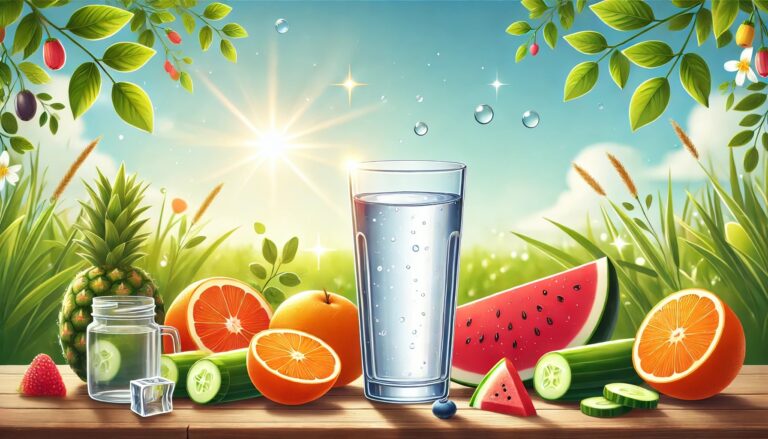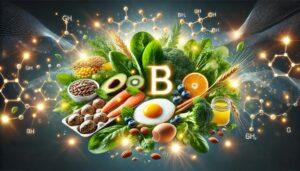Vitamin A is an essential nutrient for human health, playing a significant role in supporting vision, immune function, skin health, and cell growth. It is particularly crucial for maintaining good eyesight and preventing eye diseases. With modern dietary changes and the widespread prevalence of excessive screen time, ensuring adequate intake of vitamin A has become increasingly important. This article explores how vitamin A promotes eye health, the potential effects of deficiency, and the best food sources to help you create an effective vision protection strategy.
The Role of Vitamin A: Why Is It Crucial for Vision?
Vitamin A has multiple functions in the body, with its impact on vision being the most prominent. Here are its key roles in protecting eyesight:
1. Maintaining Night Vision
Vitamin A is a core component of rhodopsin, a light-sensitive protein found in the retina. Rhodopsin enables the eyes to detect light in low-light conditions, allowing us to see in dim environments. A lack of vitamin A impairs rhodopsin production, leading to night blindness, where vision significantly deteriorates in low-light settings.
2. Protecting Eye Surface Health and Preventing Dry Eyes
Vitamin A is vital for tear production and corneal health, ensuring the eyes remain lubricated and comfortable. Adequate levels of vitamin A help prevent dry eye syndrome. Deficiency can lead to reduced tear production, dryness on the eye surface, and, in severe cases, corneal ulcers or even vision loss.
3. Reducing the Risk of Eye Diseases
Research suggests that sufficient vitamin A intake lowers the risk of age-related macular degeneration and cataracts. This protective effect is closely linked to vitamin A’s antioxidant properties, which minimize damage to eye cells caused by free radicals.
4. Boosting Immunity to Protect Eyes
The eyes are highly susceptible to infections from external bacteria and viruses. Vitamin A strengthens the immune system, reducing the risk of eye infections such as conjunctivitis and other bacterial or viral conditions.
Two Main Forms of Vitamin A
Vitamin A is found in foods in two primary forms: retinol (active vitamin A) from animal-based sources and carotenoids (provitamin A) from plant-based sources. Understanding these forms helps us choose food sources wisely.
1. Retinol (Active Vitamin A)
• Sources: Found primarily in animal-based foods, such as liver, dairy products, and fish.
• Features: Active vitamin A can be directly absorbed and utilized by the body, offering fast and efficient benefits.
2. Carotenoids (Provitamin A)
• Sources: Found mainly in plant-based foods like carrots, sweet potatoes, pumpkins, and dark green leafy vegetables.
• Features: Carotenoids are converted into active vitamin A in the body, with beta-carotene being the most common and effective form.
• Additional Benefits: Carotenoids also act as antioxidants, helping neutralize free radicals and protecting cells from damage.
Symptoms and Risks of Vitamin A Deficiency
Globally, especially in regions where malnutrition is prevalent, vitamin A deficiency is a leading cause of blindness and visual impairments, particularly in children. In everyday life, a deficiency may present with the following symptoms and risks:
1. Night Blindness
Night blindness is an early sign of vitamin A deficiency. People with this condition experience significantly reduced vision in low-light environments, making it difficult to see in dim settings.
2. Dry Eyes and Corneal Damage
Reduced tear production can lead to dry, uncomfortable eyes. If untreated, this can progress to corneal softening, ulcers, and even irreversible vision loss.
3. Blurred Vision and Eye Infections
Vitamin A deficiency weakens eye structures, causing blurred vision. It also compromises immune function, making the eyes more susceptible to bacterial or viral infections.
4. Other Systemic Effects
Deficiency can also lead to dry skin, follicular hyperkeratosis (bumpy skin), and weakened immunity, affecting overall health.
Best Food Sources of Vitamin A
To ensure adequate and balanced intake of vitamin A, incorporate both animal-based and plant-based sources into your diet. Below are some of the best sources of vitamin A:
Animal-Based Foods (Retinol)
1. Liver
Liver from beef, chicken, or other animals is one of the richest sources of vitamin A. However, it should be consumed in moderation to avoid excessive intake. A serving once a week can meet most people’s requirements.
2. Dairy Products
Whole milk, butter, and cheese are excellent sources of vitamin A and also provide calcium and protein.
3. Fish
Cod liver oil, salmon, and mackerel are great sources of vitamin A, along with healthy omega-3 fatty acids.
4. Eggs
Egg yolks are a convenient and economical source of vitamin A for daily diets.
Plant-Based Foods (Carotenoids)
1. Carrots
Carrots are an iconic source of beta-carotene. Just 100 grams of carrots provide a significant amount of vitamin A precursor to support vision and overall health.
2. Sweet Potatoes
Packed with beta-carotene, sweet potatoes are also high in dietary fiber and antioxidants, benefiting gut health.
3. Spinach and Kale
Dark leafy greens like spinach and kale are rich in beta-carotene and lutein, helping to slow oxidative damage to eye cells.
4. Pumpkin
The orange color of pumpkins indicates their high carotenoid content, making them a valuable source of vitamin A.
5. Bell Peppers
Red and orange bell peppers are rich in carotenoids and also offer vitamin C, providing dual antioxidant protection for eye health.
How to Supplement Vitamin A Safely
1. Prioritize Dietary Sources
Natural food sources are the best way to obtain vitamin A. A diverse diet that includes both animal and plant-based options can easily meet daily requirements.
2. Avoid Overconsumption
While vitamin A is beneficial, excessive intake—especially from supplements—can lead to toxicity, causing symptoms like headaches, nausea, joint pain, or liver issues. A balanced diet typically meets most people’s needs without requiring supplements.
3. Focus on High-Risk Groups
Certain groups are more susceptible to vitamin A deficiency, including pregnant women, infants, the elderly, and individuals who smoke or drink excessively. These groups should pay extra attention to their dietary intake.
4. Combine with Healthy Fats
Vitamin A absorption relies on dietary fat, so pair it with healthy fats like olive oil, nuts, or avocados to maximize its bioavailability.
Conclusion: Vitamin A – The Guardian of Vision Health
Vitamin A is a versatile nutrient, essential for protecting vision, strengthening the immune system, and supporting overall health. By incorporating a variety of vitamin A-rich foods like carrots, sweet potatoes, liver, and dark green vegetables into your diet, you can effectively prevent vision problems and maintain optimal eye health.
While ensuring sufficient vitamin A intake, remember to avoid overconsumption and strive for balanced nutrition. Let vitamin A become a staple in your diet and provide a strong foundation for your eyesight and overall well-being!




















